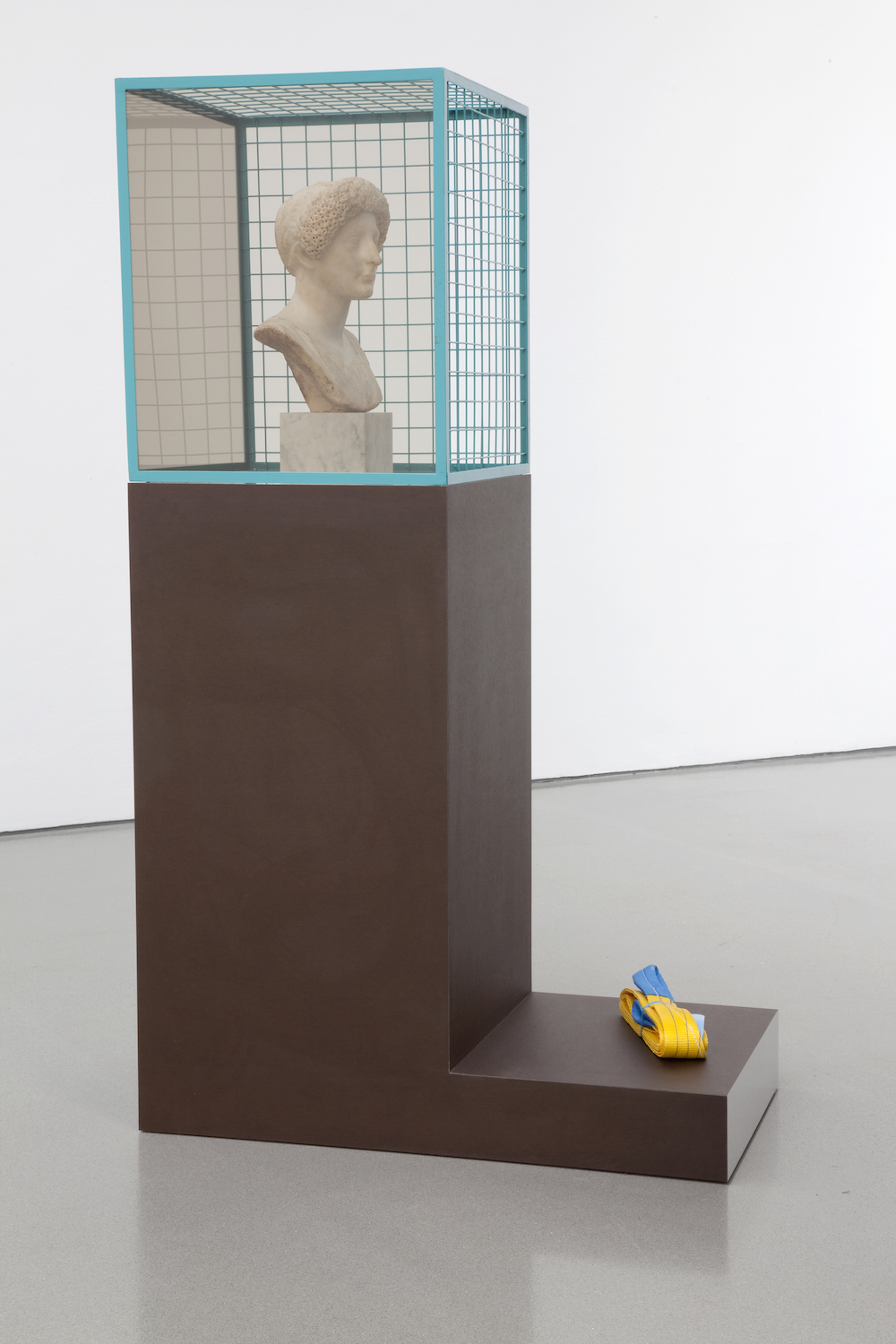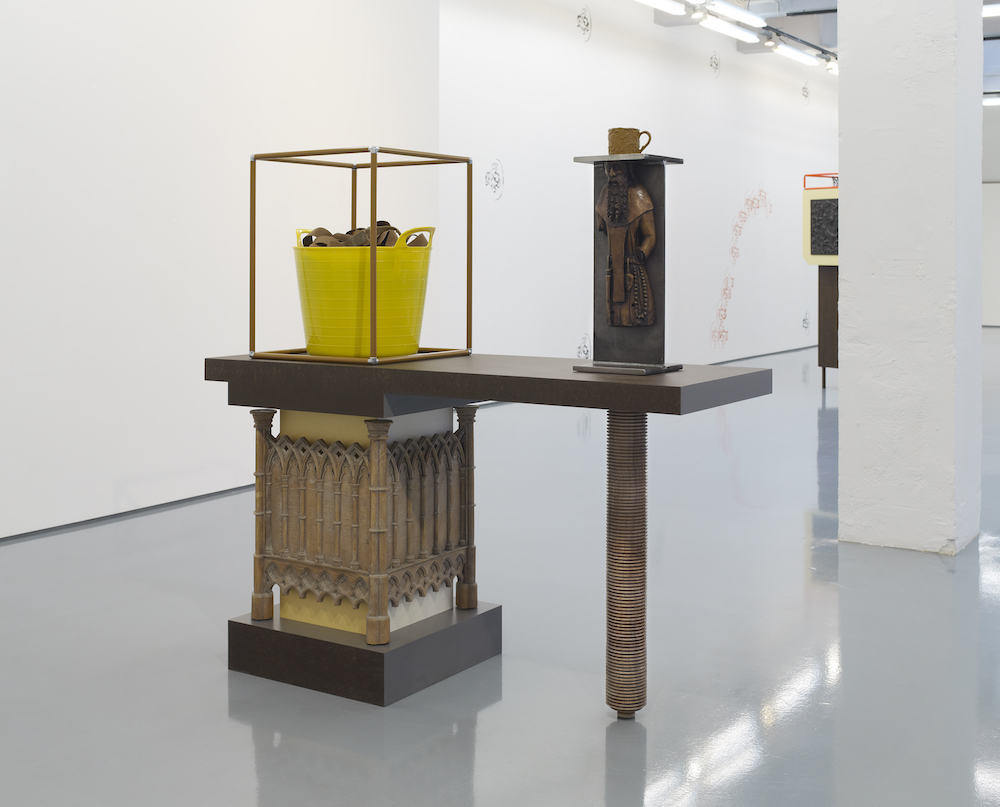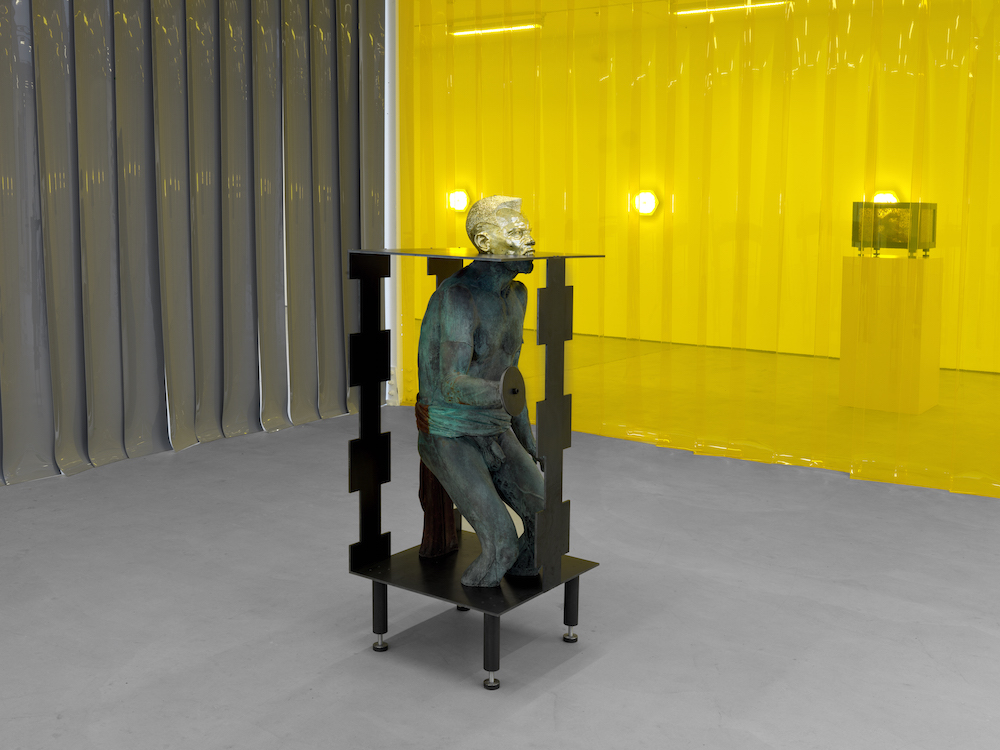British artist Steven Claydon mixes sound, sculpture and video installation in his practice, which often addresses the cultural narratives that we attach to objects and ideas. He is currently showing Infra-idol Assembly at Art Sheffield, a UK festival dedicated to moving image and sound. Art Sheffield runs until 8 May 2016.
Could you tell me a little about the work that is showing in Sheffield?
Martin [Clark, Art Sheffield Curator] asked me to make a piece. He called me—on the telephone, not on any other device!—when I was in Ireland installing a show last year. I have all these connections with Sheffield, and the idea came to me in a sort of fully-formed way while we were on the phone. It didn’t really deviate from that, apart from a bit of technical agro.
The first time I encountered Sheffield was as a teenager when I was into electronic music. A lot of it had experimental film that went with it, and it was probably the first time I’d encountered experimental art, apart from seeing Mondrians in books. I was immediately impressed by it, it’s this industrial place in the North of England that has this curious nature to it. You know, the People’s Republic of South Yorkshire. There’s the battle of Orgreave, the miners’ strike, a lot of political stuff. Through bands like Cabaret Voltaire there was a very countercultural, somehow nihilistic reflection of what was happening to Britain at large, a microcosm of that. For my generation, the horizons were looking pretty bleak growing up—there was aids and nuclear war. For me with Sheffield, there’s a sense of excitement and innovation, but also nostalgia. Ultimately I ended up more or less living there, because while I was doing my Masters at St Martin’s I was also in this band called Add N to (X), which was electronic. We ended up recording our first record up in Sheffield. Ever since I’ve had this intimate relationship with this place that I knew remotely. It was semi-touristic.
So, it was full circle that I’d be able to do something up there, especially since Martin stipulated that Art Sheffield would be an AV festival. He knows my work well and he knew that despite being nominated for a sculpture prize I’m not primarily a sculptor. I told him that I wanted to build a plate reverb. They’re quite large in comparison with what they do. What I like about them is that you pass the signal through this big atomic structure and the way that it modulates the sound is very physical. Sound, of course, is very physical; it operates like particles in waves in the air. That’s never really left me from working with electronic music, the way we project zoomorphic or anthropomorphic characteristics onto things via this abstract pattern of waves on the air. I was thinking about the way that early recordings of music would be on a wax disc with a needle, and the way you can encrypt sound into a physical object. I was really thinking about transformation and encryption, about the Cold War, and innovation. I wanted to show the work in a bunker and have this very tense environment, in which a lot of this music I was thinking about from Sheffield was made.
I wanted to get something that was incredibly essential and then let it create its own dialogue. I contacted a scientist at IBM called Andreas Heinrich, and I had been interested in the work they were doing for ages. In the 80s they were trying to photograph atoms. The trouble was, because everything has a charge, the atoms were jumping onto the probe. So they had to eject the atoms from the lens, and in doing so they realised that they had moved an atom from one place to another. Consequently they got the Nobel Prize. Ever since they’ve been moving atoms around, primarily for data storage. But what they did in order to advertise this new innovation was to make little pictures out of the atoms. The first animation they made was called The Boy and His Atom. I was interested for several reasons, primarily because of the anthropomorphic projection onto the fact that you might take the building blocks of the universe and make it into a little man—and tellingly a male. They called him Adam. I included The Boy and His Atom in a show I created.
[For Art Sheffield] I thought about the idea of this hubris, this idol as I think about it. I also got the sound of atoms being moved around and for me that was even more incredible. That’s the soundtrack for the film, and for me it’s a semi-cyclical thing; you’re passing the sound of atoms through an atomic structure. It really sounds like an electronic device I’ve used before called a ring modulator. It sounds like someone has made it up, like a real sci-fi sound or a moon landing. I wanted to play with the sound of pushing atoms through other atoms. I work a lot with lowest common denominators—a brick, a pixel, an atom—and that comes from, I suppose, my interest in pre-Socratic philosophy, people like Democritus who came up with the idea of the atom, because of an interest in the fundamental nature of stuff. I used only two frames of the film Boy with His Atom, and it’s the moment where the boy looks at the camera and blinks. Weirdly it’s the most unbelievable part of it. I used HD which I don’t normally use, which fits the size of the figure. I wanted to use back projection, as I like the idea of the light particles actually penetrating the substance. Again this transfiguration happens when the light passes through the material. In a way, when it hits the back it’s quite a low grade image, but at the front, there is more clarity. I like the idea that to see something better it has to pass through some kind of veil or cloak. This is also why I’m interested in scanning electro microscopy, because you gold plate the subject, so to see something better you coat it so that the electrons can bounce off. So it’s all part of my interest in how material has this curious role as an interface between culture and autonomous matter. This was quite a simple reflection of that. Well, it looks simple but it nearly killed me! It was such a difficult thing to make and install.
Did you build specifically for that space? Were you visiting the space all through the development?
Yes I was and the national grid were very helpful. It’s the first time it’s been open to the public properly. The reason it’s empty is that it was built to supply the steel industry with electricity, and it’s remained empty for decades. It’s a huge cavernous space, it would have been so easy to have my Spinal Tap, Stonehenge moment and make something that looks so tiny in that environment, so I knew it had to be big but not too stagey. The screen is more than 4 metres tall, and that room is 9 or 10 meters tall. The plate reverb itself, which looks titchy in photographs, is three and a half metres long. The materials and the space were already incredibly interesting, so it was a bit of a no brainer. The soundtrack is more complex than is probably necessary for a space that’s so reverberatory anyway, I used the plate reverb to just double that up, so that some new material could be found in that doubling. There’s a lot of doubling in my work. I am a twin! So it might be more than a coincidence.
Do you feel more excited working in unusual spaces–like this space at Sheffield–than a white cube space, or do both give you something interesting that you can play to?
Well, white cube spaces aren’t necessarily always white cube spaces. The trickiest space I’ve ever worked in was supposedly a purpose built gallery, which for some artists would be a total disaster, it was all angles. I worked with it and I thought I put on an OK show there, maybe because it was so difficult. Then I’ve worked in places that have so much charisma that it’s difficult. Nice, white perpendicular walls, I don’t know why that’s been so lost on some people. Then there are the performances that I’ve put together—the first time I put a film installation together was at the Serpentine, and I’m a little wary of film installations, I have a curious relationship with them. The last thing I want to do at any biennale is go through that black curtain. There’re all kinds of problems with art when it becomes theatrical, it renders the things very differently, critically, when something becomes a prop. Which isn’t to say that I don’t love something being a prop. For instance I call my prints, posters. Probably if I was brave enough I’d call my sculptures props. Because I think props, get bad props! In a way they’re interesting, they’re a vessel for the suspension of disbelief, and they take you on a journey. The negative part of that is that they’re somehow redundant, and outside of the narrative. But I don’t think that, they’re the protagonists, especially in sculpture. I’m not trying to illustrate anything, what I want to do is create some kind of relationship with the thing and the journey starts there. So authorship is different to seeing a prop in a theatre, and authorship is a very tricky thing for me. I don’t like the idea that I necessarily author these things, I think it’s a reciprocal journey that I go on, and once I let go of the thing the authorship is more or less redundant because anyone can make of it what they will. That catalytic event is what I want in an artwork, and what I get from looking at objects.
So does it feel contradictory to explain your own spin on your artwork, if you aren’t so keen on the idea of authorship?
No I’m happy to explain it. But it can be read totally formally, or someone can view with their own narrative. What bothers me is when someone hears something I have said and then say: ‘Well I’m not getting that from the work’. I do understand their point, but I try to invest the work with enough genetic material that it can grow itself, with the aid of that spark that the viewer gives it.
Do you see your video work in the same terms as your sculptural work? Are they also props?
Yes and no. Really—having said all that about props—that is very much based in the narrative work, in how we view things. But essentially my interest in the world goes beyond the narrative, I’m much more interested in the way things combine and spontaneously create their own world, and open up the world. When I speak about the world I mean the cultural world, and hopefully these things can shed some light on us, we’re not projecting onto them.
You work with cultural understandings and narratives that can be seen as very loose or subjective, and also with scientific developments that can be seen much more as a definite truth. Are these things different for you?
I think a scientific viewing is a cultural viewing, they are all contingent on epochal changes, and they are all relative to the type of temporal episode in which they’re made. Usually within 15 years that has been lost, or forgotten, or changed again. Once a thing is rendered by history, once a thing is lost, it becomes very much a cultural thing. But I know what you mean, the Hubble Space Telescope is out there doing its thing, and it’s just on the cusp of being outside the cultural, but it’s very much about the eye of the human race peering out, and anything that has that voyeurism is cultural to me. I’ve worked a lot with that idea really, on an anthropological level about the eye. The human gaze I think is a cultural gaze. Although there’s probably a better word than cultural for it. I was schooled on post-structuralism and very much from the 20th century perspective and I think there was a lot of gaze there, politically, in terms of emancipation, and suddenly to refute that, I can’t do that, so for me it’s the interface between everything. It’s what I would call a non-teenage existentialism, maybe an object-orientated existentialism. It’s really where we are as humans, between the material world and the makeup of our environment, our own ecology and our cultural ecology. They all start to become the same sort of thing. For me there’s a nice interplay between phenomenology and post-structuralism that I don’t see as contradictory.
Were you already interested in exploring these ideas when you were studying painting, or have they come a little later?
I was always interested in museums, in how we encounter things. I suppose an art gallery, commercial or institutional is the same as encountering something in a special case environment, where the status of things is amplified. I think I was always more interested in stuff than art and I think my paintings reflected that. But I never held with the post-modern irony of collapsing things. I’m kind of the opposite, I’d like to have multiple, intense specificity rather than just collapsing everything and saying it’s all nonsense. There was always something I thought was missing, and I had to make it.
Do you feel you’re ever having a laugh at art? The works are often funny, there are the googly eyes…
I knew I shouldn’t have made the googly eye piece! There was a really weird thing when I was a kid, I had this little puffy plastic crab that had googly eyes on it. I had a series of dreams about it when I was a child, almost hallucinogenic about this crab under the bed, and it grew. It’s never left me, and that might be the genesis of my interest in googly eyes. But if you put a googly eye on anything it becomes funny. And of course there’s humour, which I want to extend into the fabric of stuff. Making art is a new language, every time you make an artwork you evoke a new grammar, however rudimentary that might be.
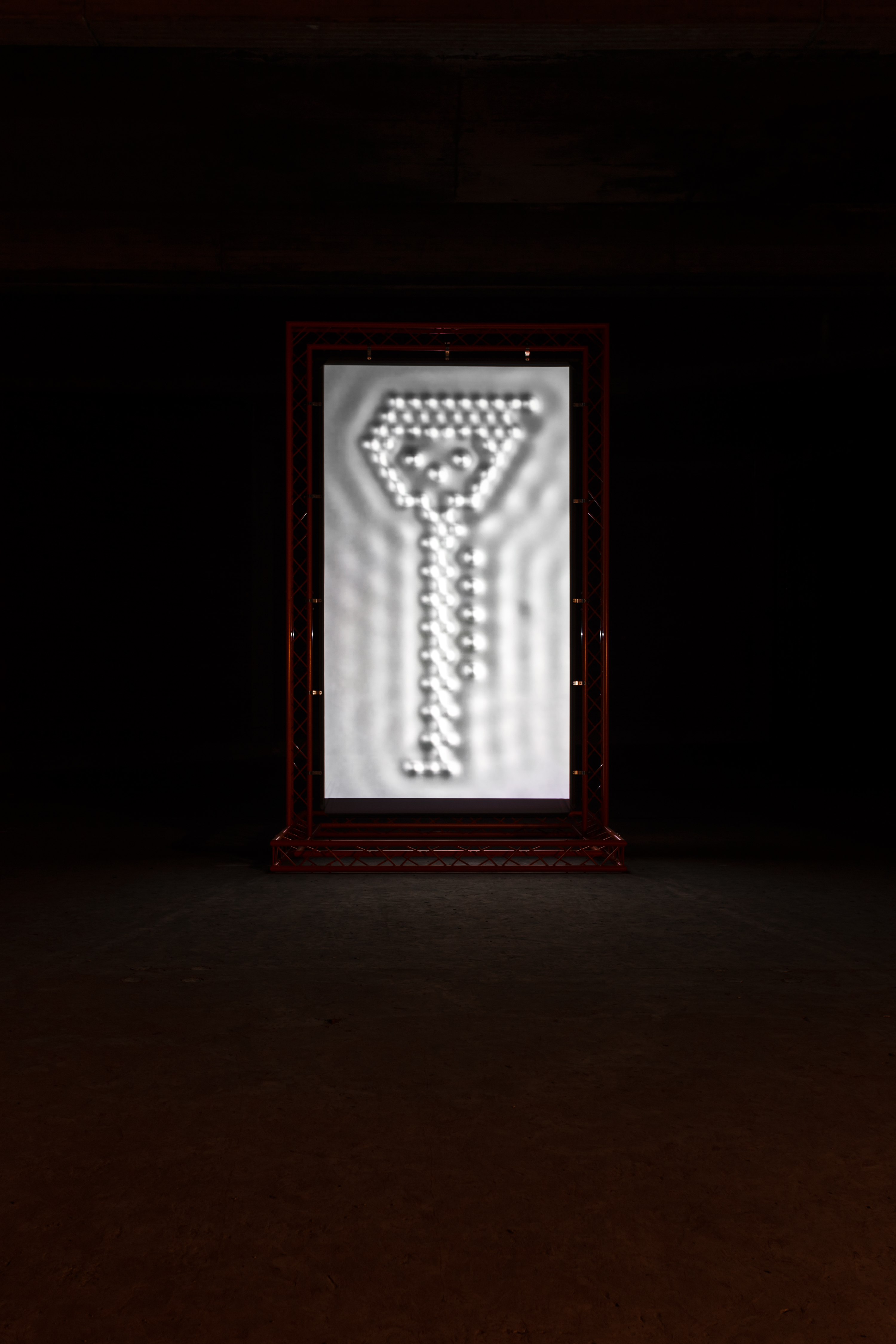
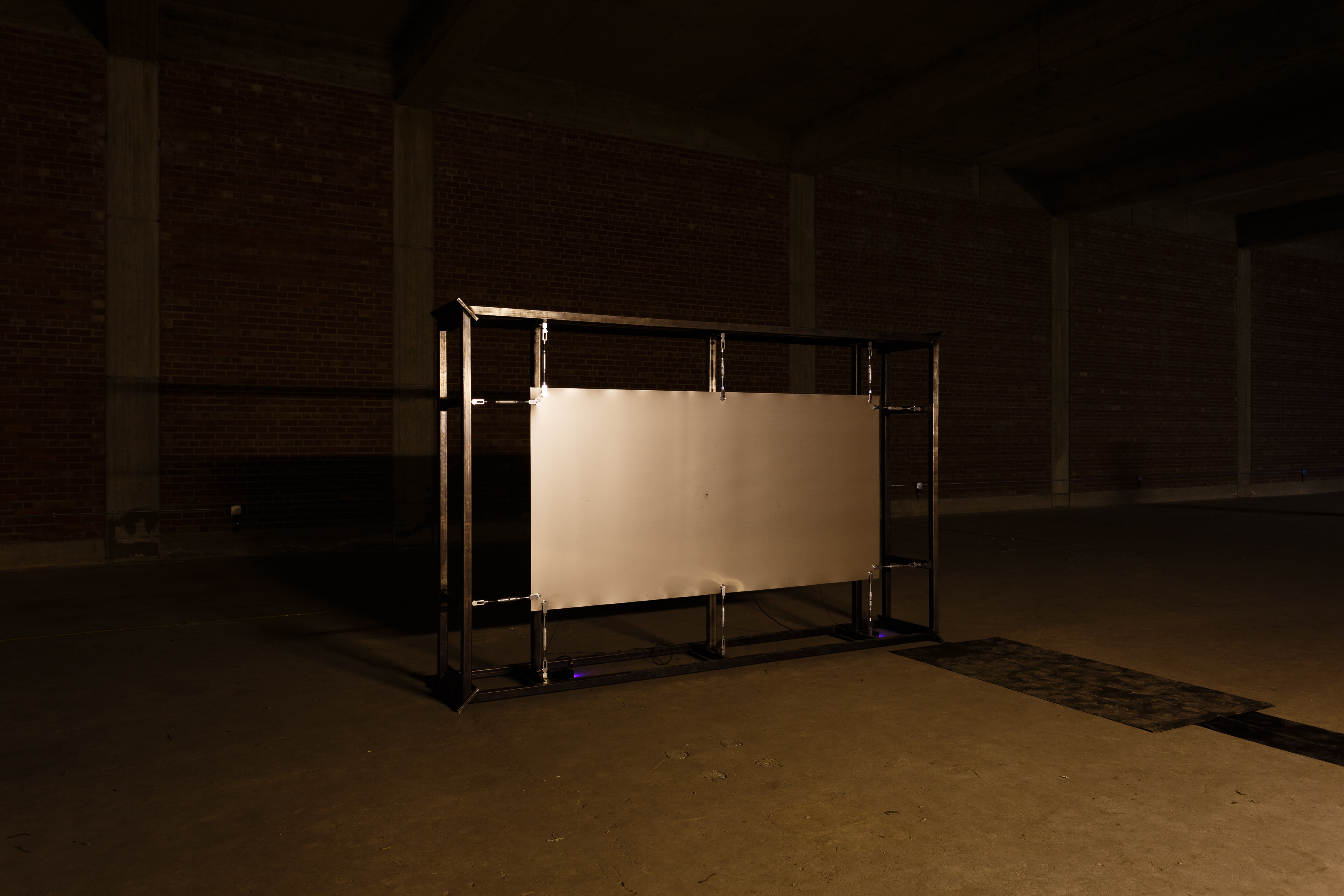
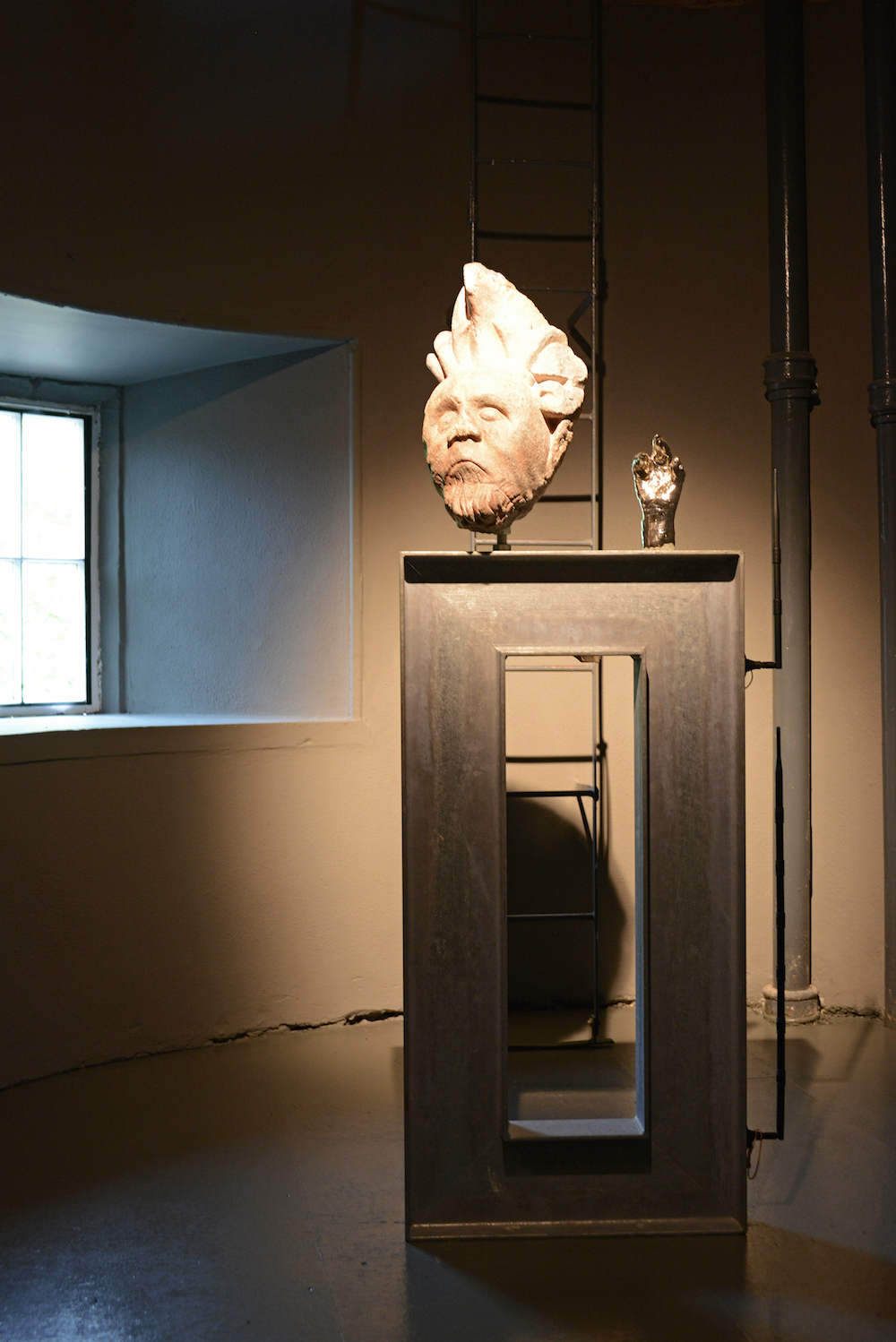
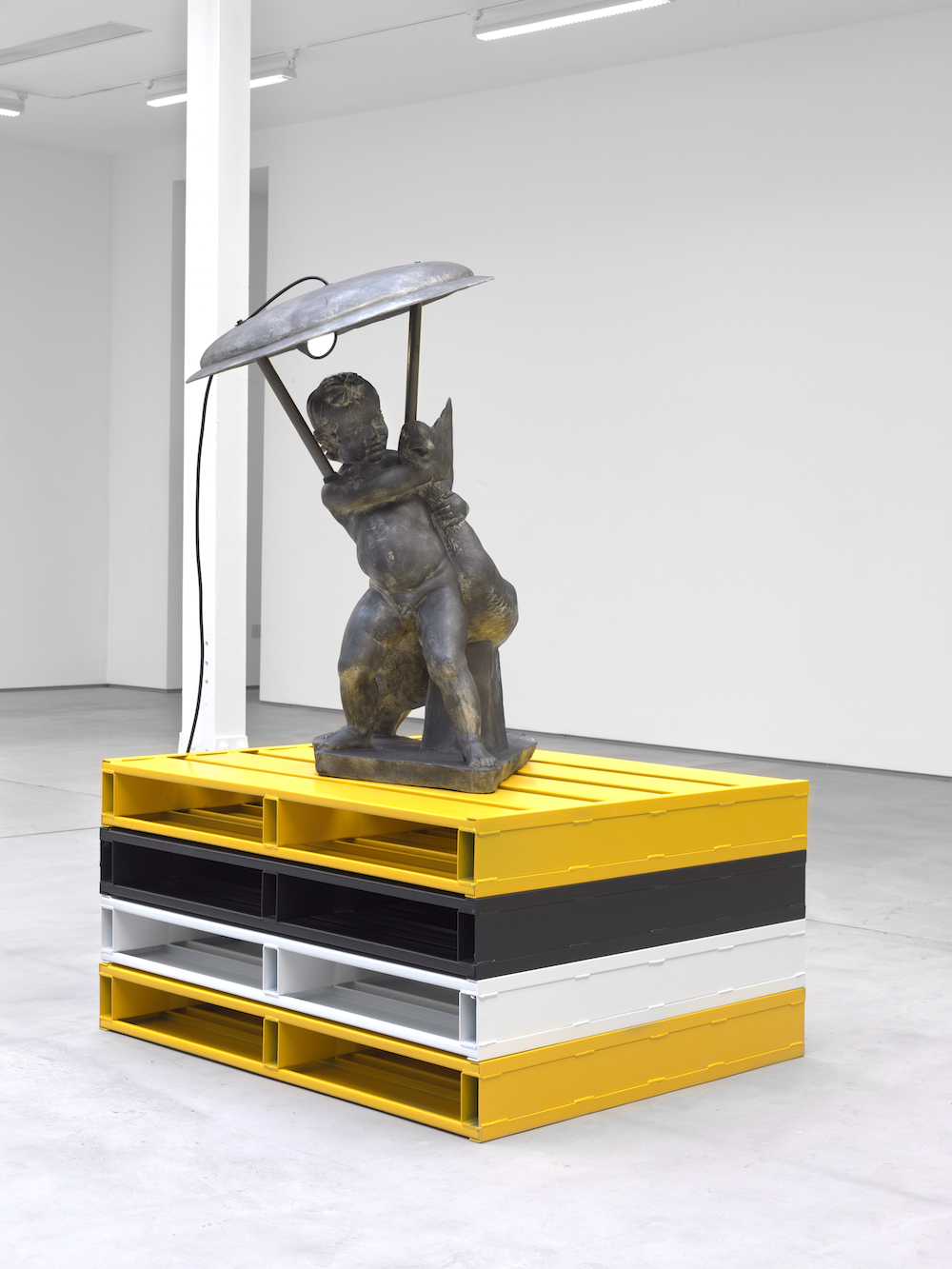
Steven Claydon Compound Chimera (Survivalist) 2016 resin, powder coated steel, light 177 x 123 x 102 cm / 69 ⅝ x 48 ⅜ x 40 ⅛ in Copyright the artist, courtesy Sadie Coles HQ, London
